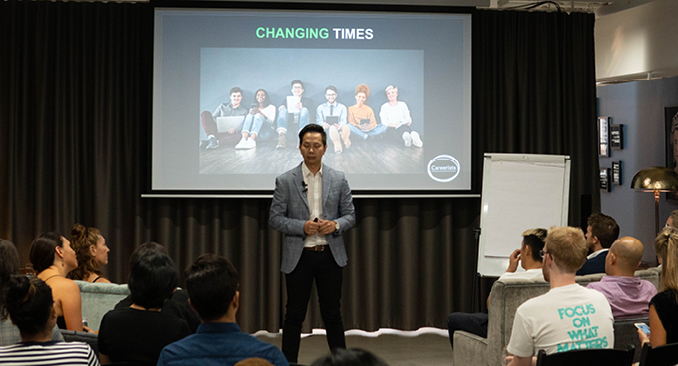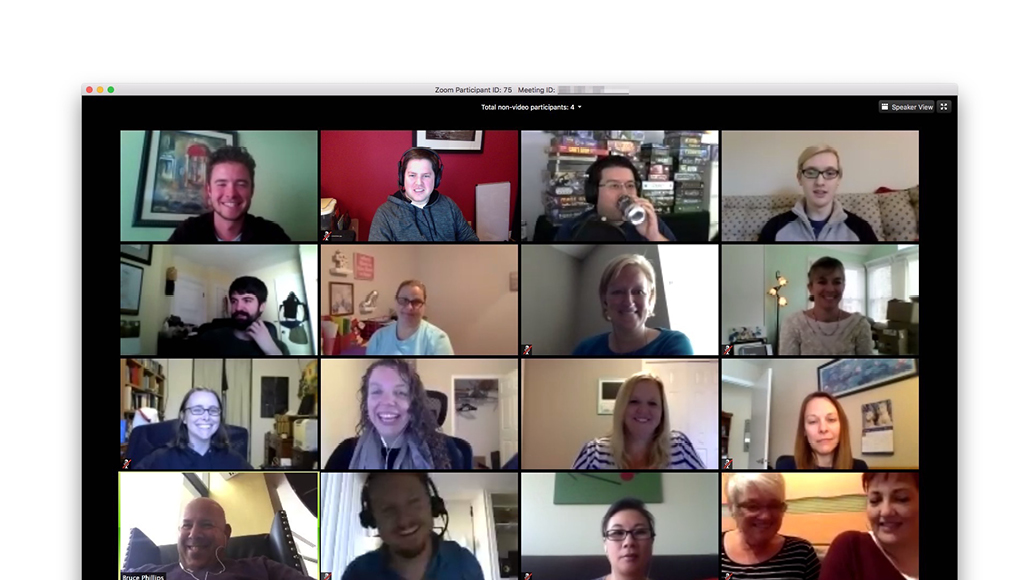Business as "Unusual"
Shopping centres, restaurants and beaches are filling up again and Australia is preparing to return to work. But the Coronavirus Pandemic has seriously impacted the economy and for most of us, the environment has changed, leaving us with challenges we’ve never experienced before. Many business owners have been forced to close their doors and let go of their staff, and for those that have managed to survive, the workplace environment is far from usual. The new “Unusual” involves necessary changes in employee health support, remote working, gig work and employee tracking according to Gartner HR practice’s Chief of Research, Brian Kropp. Organisations must differentiate themselves from their competitors in order to thrive, understand the large-scale shifts that are changing how businesses operate, and how people work. The new unusual brings with it some key opportunities too which must be leveraged in order to keep up with the competition.
Remote Work and Technology
The power of technology has never been so important. Now that teams have become acclimatised to working remotely, the option to work from home longer-term has now become the norm. Gartner analysis suggests that 48% of employees will opt to work remotely at least part time in the post-pandemic workplace, which has jumped from 30% of employees pre-pandemic. The importance of digital collaboration tools therefore, is more important than ever and managers must rethink the way they manage performance and how employees are evaluated.
Roles and Skills
Businesses should shift from attempting to “predict” the environment and target specific set of future skills, to “Responding” to the changing landscape by creating an internal structure that can be fluid and quick to adapt, Gartner advises. For long term growth and productivity, the workforce of the future must be redesigned to separate critical skills from non-critical, and from critical roles to non-critical roles. This will “shift the focus to coaching employees to develop skills that potentially open multiple avenues for them, rather than focusing on preparing for a specific next role” says Gartner HR practice director Emily Rose McRae.
Contingent staffing, or the provision of flexible careers can help employees gain more knowledge, and help employers by outsourcing non-critical roles. “A recent Gartner survey revealed that 32% of organisations are replacing full time employees with contingent workers as a cost-saving measure. Utilising more temp workers also provides employers with greater workforce management flexibility”
The Blended Workforce of 2020
Companies that reorganise their teams to focus on growth and productivity will be the most successful in the NEW world of work. Business leaders must double down, innovate and accelerate and they must do so quickly in order to grow. How?
- Identify critical skills and competencies in existing workforce
- Identify the skills needed to meet strategic business goals
- Place full-time employees with critical skills into strategic roles
- Non-critical roles and tasks must be outsourced to temps
In order for businesses to grow, small teams must have the ability to focus on what matters. To use the buzzword of 2020 - organisations must pivot and outsource the administrative or BAU tasks that keep the lights on, so that they can buy themselves more time to focus on growth initiatives. Strategic workforce planners that are conscious of the threat of a global recession, are utilising a blend of temp workers and full-timers to ensure maximum productivity and save on their operating costs.
Technology Enabled Temp Hiring
The quickest way to deploy skilled temps within your organisation is by leveraging the possibilities of technology. Thanks to its speed and efficiency, using an online hiring platform like Weploy to deploy skilled temps for non-critical or administrative tasks is by far the most cost-effective way. Weploy provides businesses of all sizes, with ready to work temps (or “Weployees”) that have been skills tested, background checked and pre-interviewed to uncover talent with greater digital dexterity and effective remote working abilities. Free to join, companies can create an account and use the platform to search for specific skills or particular systems knowledge such as Xero or Zendesk. Companies pay a flat, hourly fee that includes payment to the Weployee, payroll tax, WorkCover and a flat service fee, until your job is completed. Sign up now, and discover the talent available today.

The State of Workplace Mental Health in Australia report reveals that one in five Australian workers is currently experiencing a mental health condition and anxiety and depression are the most common of these. With much of people’s time each day spent at work, the workplace is very influential when it comes to mental health and therefore, each employer has a responsibility to maintain a positive and healthy environment that when executed well, will have business benefits too.

The job market and career paths of today are changing quicker than ever before. As of January 2018, the Australian Bureau of Statistics states that 4.2 years is the average length for permanent employees.

A Gartner survey reveals 88% of organisations have encouraged or required employees to work from home due to Coronavirus, enforcing a global ‘Work from Home experiment’ which none of us saw coming and nobody had planned for.
Streamline your hiring
Business support staff with no hidden fees. Start hiring anytime.
